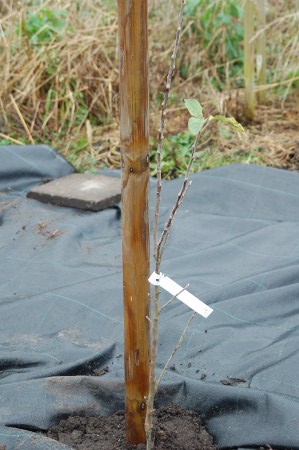
I grew two kinds of yacón this year. The first you see on the right is an unnamed variety with brown roots, which seems to be the most common kind at the moment. The other variety, on the left, is called yacón morado and has red roots. You can see yacón morado also has reddish leaves.
The unnamed variety is significantly more productive, yielding around twice what the yacón morado does, or about 10Kg per plant.
Yacón morado has an abundance of small flowers throughout most of the summer. While the unnamed variety can bloom from time to time, it usually only does so as a result of some kind of stress.
The flowers also attracted large numbers of bees, but for whatever reason every time I was ready with the camera all the bees went away.
Here are the harvested roots. Either something changed in the way it grew, or perhaps I was a little rushed during harvest, but it seems like the tubers broke off more readily this year during harvest. Anyway, the one sure thing about yacón is the harvest is big, so even with a few pieces broken off there’s still lots left. I’m not sure if the broken off pieces will rot before I have a chance to eat them or not.
I also haven’t had a chance to taste these two varieties side by side, so I’m not sure if the flavors are different.


